The Honda CR-V debuted in 1997 and has grown in popularity to become one of the automaker’s best and safest vehicles. We cover its safest years.
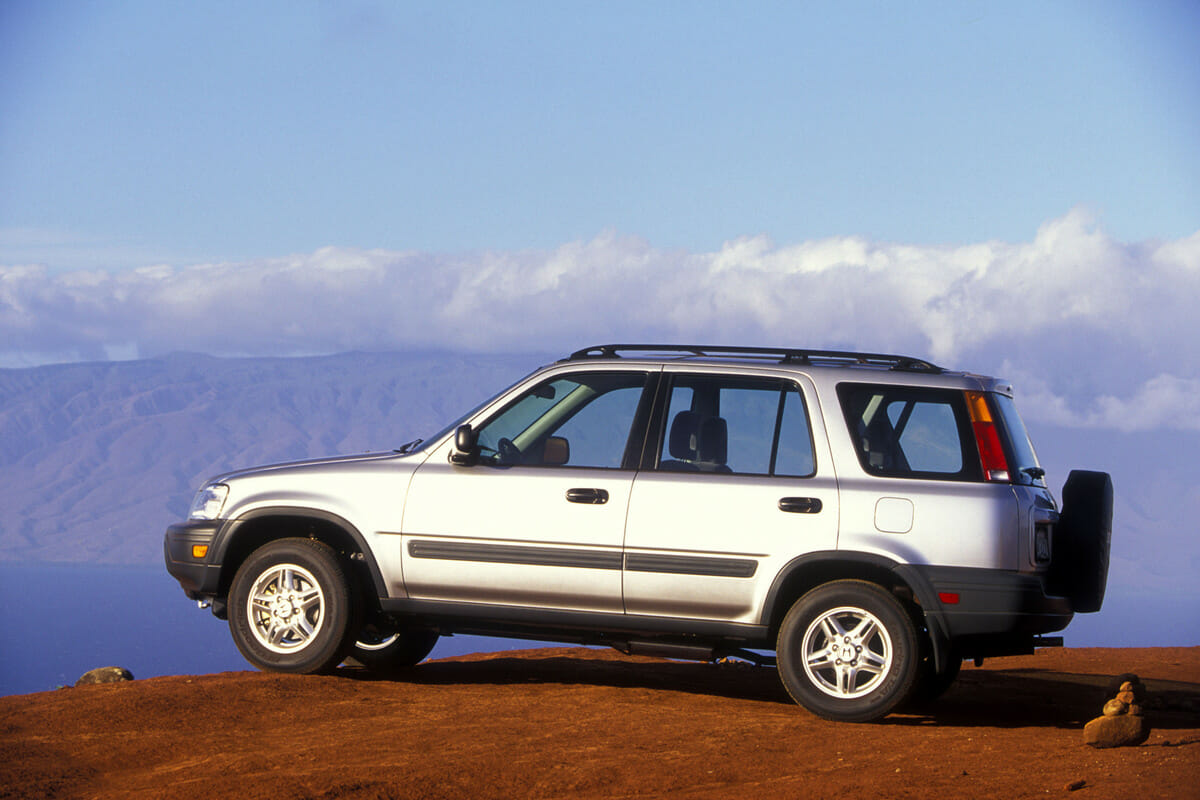
The Honda CR-V debuted in North America in 1997, and its popularity has grown considerably, making it one of the automaker’s best-selling vehicles in the U.S. Now in its fifth generation, it’s among the safest vehicles you can buy.
The CR-V has also consistently earned top rankings from the National Highway Traffic Safety Administration (NHTSA) and the Insurance Institute for Highway Safety (IIHS).
So, if you’re interested in buying a new or used Honda CR-V, we’ve done some deep-dive research into its recent generations’ safety ratings to help you make the best buying choices.
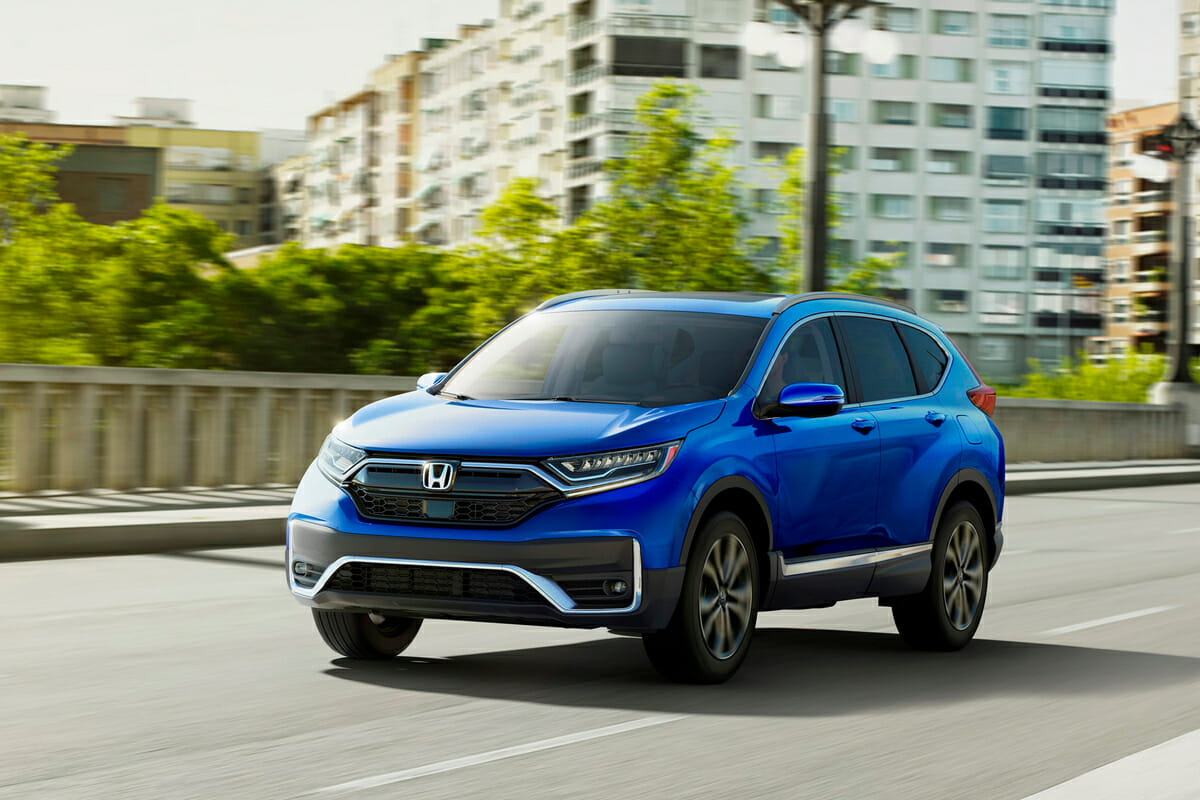
Honda CR-V Fifth Generation (2017-2021)
The latest version of the CR-V arrived for 2017. As before, the CR-V comes with standard front-wheel drive, but opting for all-wheel drive adds an extra margin of traction in foul weather conditions as up to 40 percent of engine torque can be sent to the rear wheels.
All 2017 CR-Vs come with:
- Standard front, front-side, and side curtain airbags
- Three-point belts
- Child-proof rear door locks
- Stability control
- Traction control
- Anti-lock brakes
- Electronic brakeforce distribution
- Brake assist
- Tire-pressure monitor
- LED daytime running lamps
- Rear-view camera
Here’s what those systems do. Anti-lock brakes modulate brake pressure on a wheel that’s slipping to prevent lock-up, while electronic brakeforce distribution proportions front-to-rear brake force based on the vehicle’s load on each wheel. Brake assist applies additional braking force if you’re not braking hard enough.
Stability control selectively slows one or more slipping wheels while cornering to keep the car on its intended path.
Blind-spot information alerts you that cars or trucks are in your vehicle’s blind spot, while the driver attention monitor tracks your inputs and suggests when you should take a break. Both are standard on all but the base LX trim.
Honda Sensing, a suite of driver-assist safety systems is optional on all but the base LX trim. The package includes forward collision warning, lane departure warning, lane-keeping assist, collision mitigation braking, road departure mitigation, and adaptive cruise control.
Forward collision warning uses windshield-mounted monitors to keep an eye on vehicles in front of you. If the system determines that you’re at risk of a collision, it activates audio and visual alerts to warn you. If you don’t act it will apply brake pressure, too. Lane departure warning detects when you veer outside of your lane, while lane-keeping assist reads lane markings and applies the electric power steering to maintain the vehicle’s position within the lane.
Collision mitigating braking uses the windshield-mounted camera to alerts the driver if a collision is imminent. If the driver does not brake, the vehicle intervenes to stop the vehicle. Road departure mitigation ensures the CR-V stays in a detected lane as the driver intends, applying steering or braking to prevent the vehicle from leaving the road.
Finally, adaptive cruise control uses radars to maintain the set speed and following distance by automatically braking or accelerating.
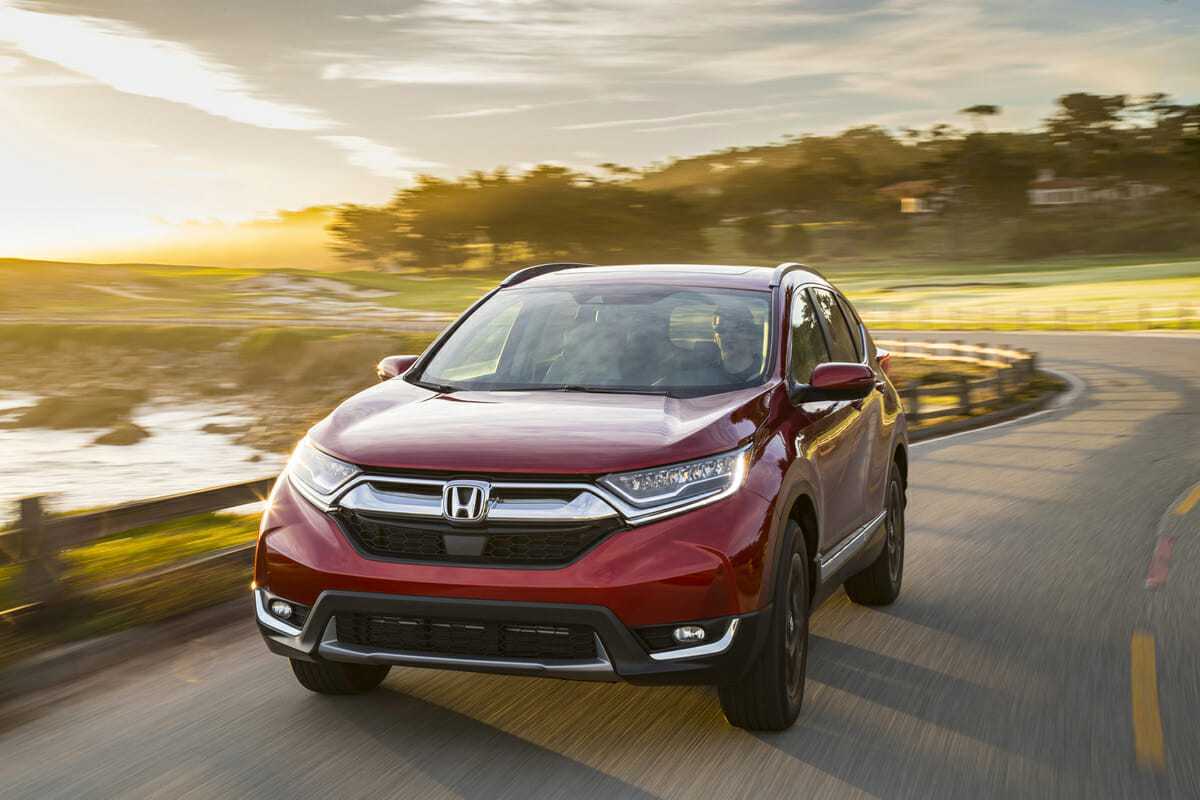
2017-2021 Honda CR-V’s IIHS Safety Ratings
The NHTSA gave the 2017-2021 CR-V five out of five stars in its overall safety rating, with five stars awarded for both front and side crash safety. It earned four stars for rollover protection.
In its own tests, the IIHS awarded the 2017-2019 Honda CR-V its “Top Safety Pick+” award, but only for vehicles equipped with collision mitigation, which prevented collisions in IIHS tests up to 25 mph. Crashworthiness was rated “Good” in front overlap and side crash tests, its top test rating.
Roof strength, head restraints, and seats all rated as “Good.” The CR-V’s LED reflector headlights only merited an “Average” in the Touring trim, while the halogen headlights used on other trims only merited a “Marginal.”
Child seat anchors were rated “Acceptable.” For 2020-21, the IIHS’ rating slipped slightly to a still-excellent “Top Safety Pick” for vehicles equipped with collision mitigation and LED headlights, but its other ratings remain unchanged.
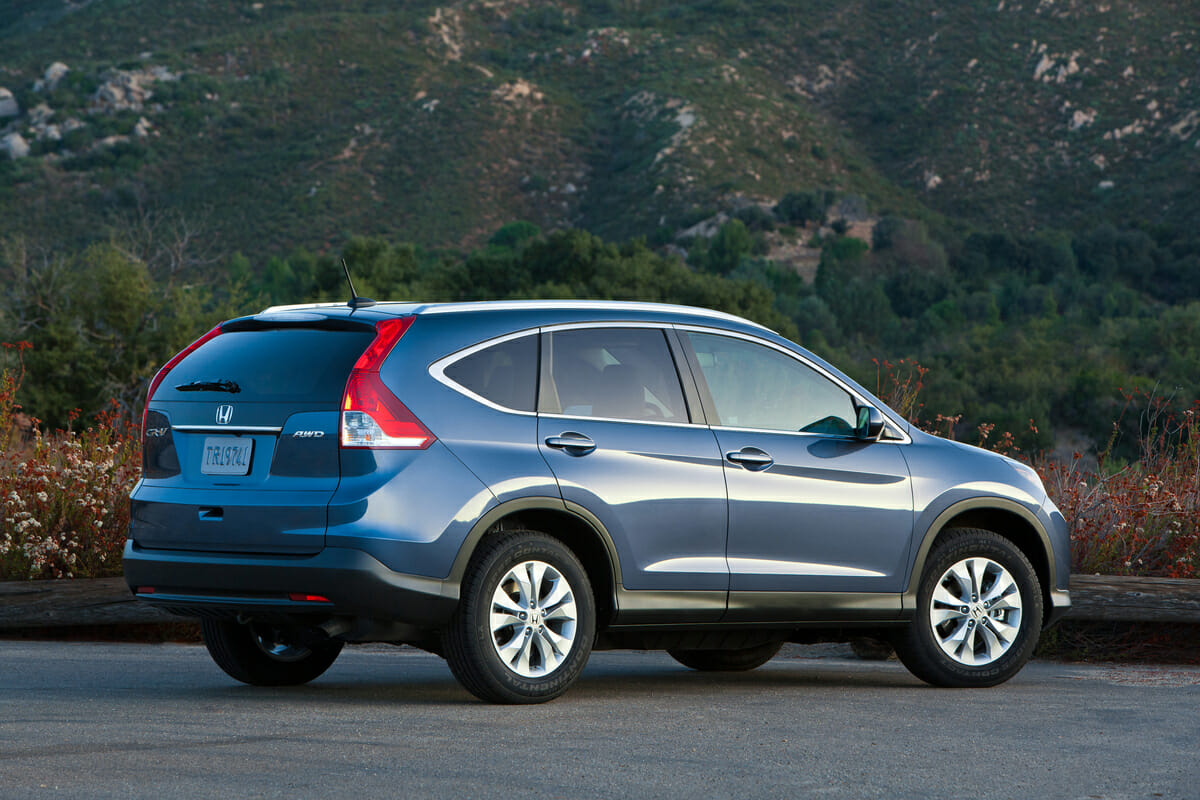
Honda CR-V Fourth Generation (2012-2016)
When the redesigned fourth-generation CR-V arrived for the 2012 model year, Honda equipped it with:
- Front, front-side, and side curtain airbags
- Three-point belts
- Child-proof rear door locks
- Stability control
- Traction control
- Anti-lock brakes
- Electronic brakeforce distribution
- Brake assist
- Tire-pressure monitor
- Redesigned seats to help lessen severity of neck injuries in rear-impact crashes
The NHTSA rated the 2012-2014 CR-V five out of five stars in its overall safety rating, with five stars also awarded for both front and side crash safety. It earned four stars for rollover protection.
In its IIHS tests, the same models were rated a “Top Safety Pick” with “Good” crashworthiness in all but small overlap crashes, which merited a “Marginal.” The CR-V’s structure and safety cage were rated “Poor,” as the driver’s survival space was not well-maintained.
Front door pillar and instrument panel intrusion were extensive enough to ensure a moderate risk of injury. Driver restraints also were ranked “Marginal,” because the steering wheel moved to the right, leaving the head exposed to contact with vehicle structure rather than the airbag. Roof strength was rated “Good,” as were head restraint and seat design.
In 2015, the CR-V received a mid-cycle refresh with upgrades to the body and a revised driveline. Most importantly, Honda Sensing, a suite of driver-assist safety systems was added as optional equipment. The package included forward collision warning, lane departure warning, lane-keeping assist, collision mitigation braking, road departure mitigation, and adaptive cruise control.
Nevertheless, the CR-V’s safety ratings declined.
NHTSA gave the 2015 CR-V an overall rating of four out of five stars overall, with four stars for front crash and rollover protection, although it garnered five stars for side crash protection. However, the IIHS disagreed, rating the 2015-2016 CR-V a “Top Safety Pick+” with “Good” crashworthiness, crash avoidance, roof strength, and head restraint and seat design.
Changes to the front-end structure and restraint system improved its safety. Only the child seat latch design rated a “Marginal.” For 2016, the CR-V’s NHTSA ratings saw a return to form, earning five stars for front and side crash safety, as well as overall. It earned four stars for rollover protection.
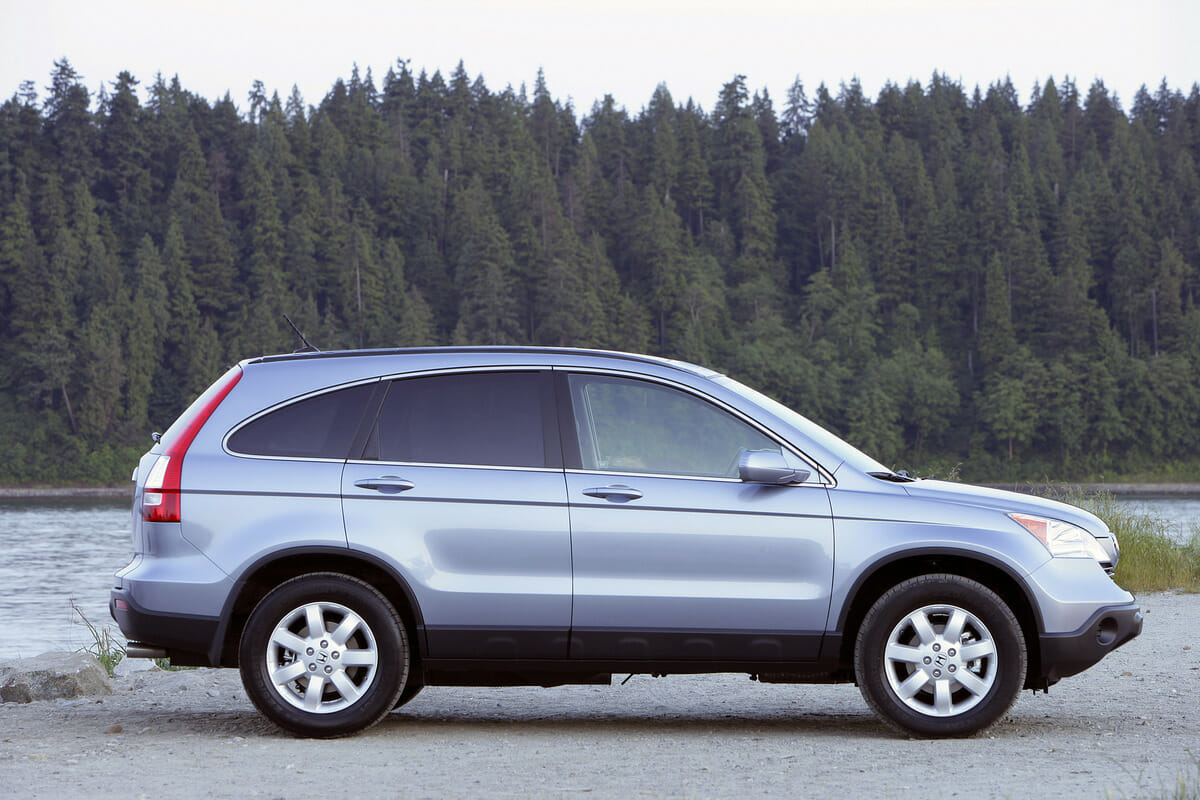
Honda CR-V Third Generation (2007-2011)
A decade after the first CR-V debuted, Honda fielded the third generation of its venerable crossover utility vehicle with a redesigned body and chassis in 2007. As in other model years, front-wheel drive is standard, all-wheel drive is optional.
Standard safety gear included six airbags, including front and side-curtain airbags, as well as stability control, traction control, anti-lock brakes, electronic brakeforce distribution, and brake assist.
The CR-V’s newly developed front-end frame structure better absorbs energy in a front-end collision throughout more of the body structure, a feature that would be incorporated in future CR-Vs. The back-end structure was also changed to protect occupants in the event of an offset rear collisions.
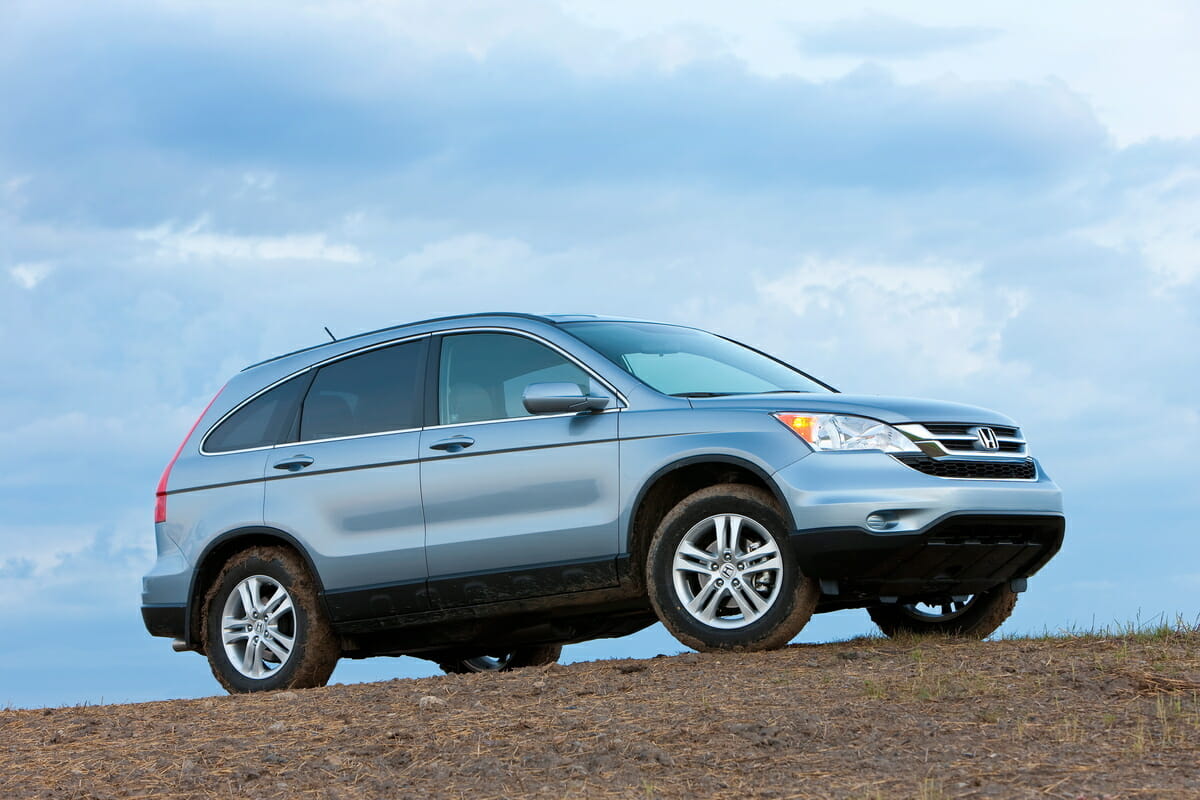
2007-2011 Honda CR-V’s IIHS Safety Ratings
As has long been the case with the CR-V, the 2007-2010 model’s NHTSA ratings earned five stars for front and side crash safety, as well as overall. It earned four stars for rollover protection. In 2011, the ratings declined to four stars across the board.
In contrast, the IIHS rates the 2007-2011 models as “Top Safety Picks” with “Good” crashworthiness and occupant protection. Roof strength is only “Marginal,” although head restraint and seat design rank as “Good.”
While safety has advanced over the CR-V’s past three iterations, the CR-V has a proven safety record, one that’s among the best, year after year.
Photos: Honda